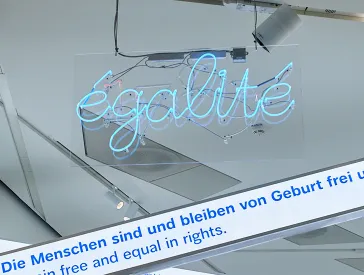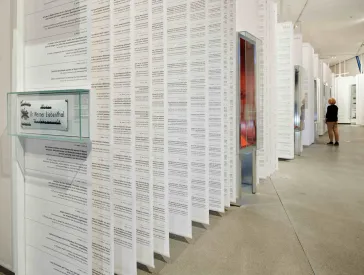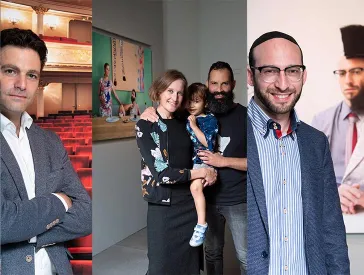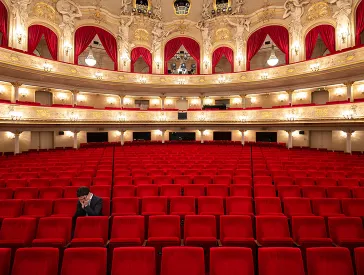Stéphane Etrillard
Interview and Photo with the Portrait from the Exhibition Frédéric Brenner – ZERHEILT: HEALED TO PIECES
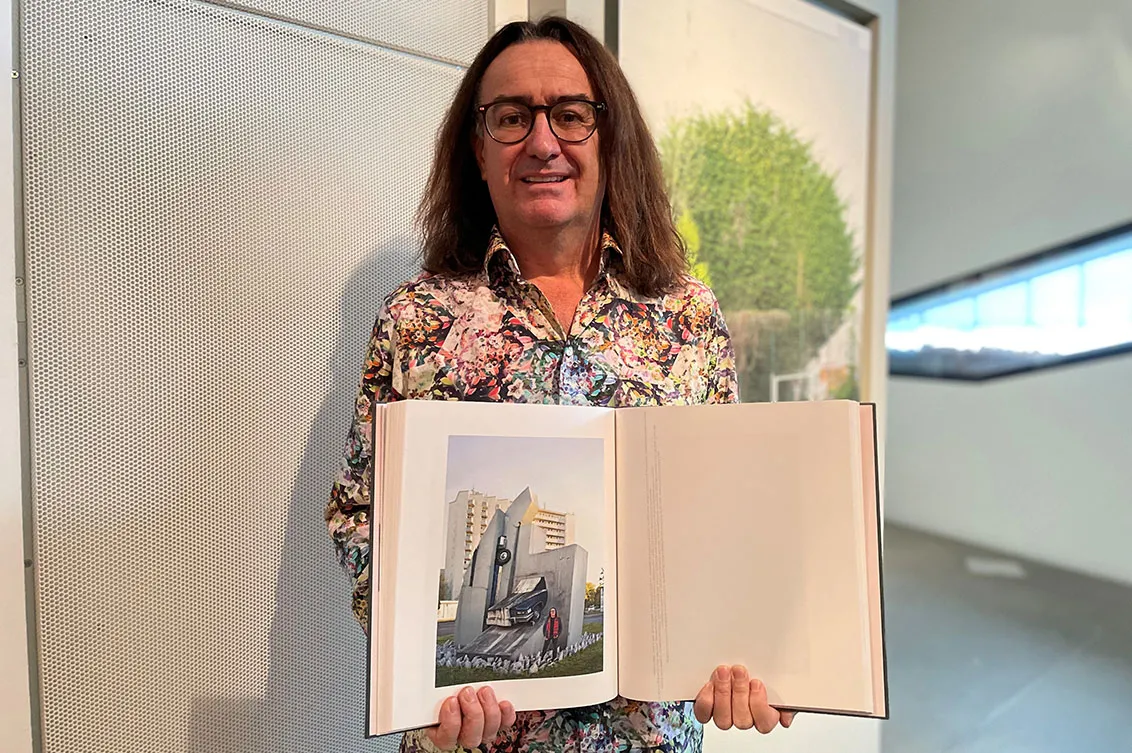
Stéphane Etrillard at the exhibition ZERHEILT: HEALED TO PIECES; Jewish Museum Berlin; photo: Theresia Ziehe
My name is Stéphane Etrillard. I am the author of many books, a business philosopher, and a coach and mentor of entrepreneurs and public figures. For nearly four decades now, I have been occupied with Jewish identity – to varying intensities across the stages of my life. I enjoy moving among different worlds.
Where did the idea for your portrait’s staging and setting come from?
After I met Frédéric Brenner in a personal context, we got to talking and met several times to discuss Berlin, the new face of Judaism in this city, Jewish identity, and life. We quickly established trust: those conversations happened in French and we soon figured out we had mutual friends in three countries: France, Israel, and Germany. With that context, the threads converged and Frédéric had the idea of photographing me at that very spot in Berlin. I used to pass that street corner twice a day in 1988, when I first arrived in Berlin. Upon hearing his suggestion, I was overtaken by the past, which is something that can happen very quickly in Berlin.
How do you experience Jewish life in Berlin?
I experience Jewish life in Berlin as colorful, diverse, and very dynamic. As something that has been “reborn” or “recreated” but did not evolve organically, since it reemerged in the vacuum the Shoah left behind. Much is being done to make Jewish life publicly acceptable again. That can work in little niches, but for me it often feels artificial, as if trying too hard to be normal. It’s always overshadowed by the ubiquitous discourse on antisemitism, aside from which Judaism scarcely seems entitled to exist in Germany.
Describe your life in Berlin in three adjectives.
Distanced, free, grateful
I enjoy living in Berlin when I’m here. At the same time, I feel like a “resident at a remove.” This city allows me to live a free life. I can be the person I am and want to be. And yet, even after all these years, I still feel like an outsider in Berlin. Every day, I’m made aware that my identity does not include “Germanness” or “Berlinerness.” Nevertheless, to some extent, Berlin enabled me to become the person I am today. For that I am grateful.
What would your wish be for the future of Jewish life in Berlin?
I’d wish for Jewish life in Berlin to become more organic, for Jews to be allowed to live openly and visibly in Berlin. Most of all, I wish that Jews and non-Jews would give more of their attention to Judaism and its intellectual richness than to antisemitism. It’s just exhausting by this point: Germany’s nearly exclusive involvement with Judaism is its constant grappling with antisemitism. Well, sometimes it will take generations of grappling to overcome historical traumas.
From the photographic essay ZERHEILT: HEALED TO PIECES by Frédéric Brenner; Jewish Museum Berlin, purchased with the support of the Friends of the Jewish Museum Berlin
Citation recommendation:
Jewish Museum Berlin (2022), Stéphane Etrillard. Interview and Photo with the Portrait from the Exhibition Frédéric Brenner – ZERHEILT: HEALED TO PIECES.
URL: www.jmberlin.de/en/node/8583
